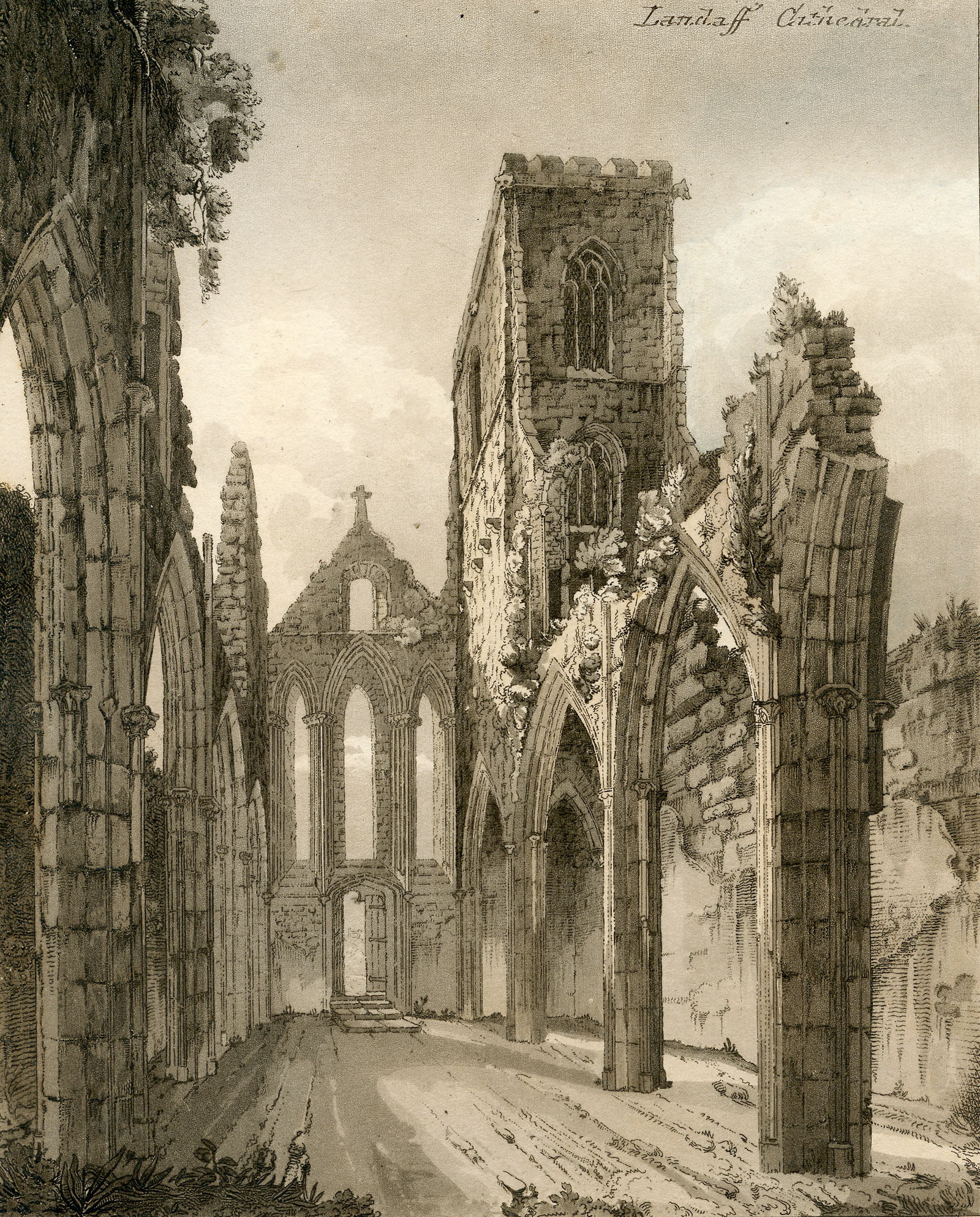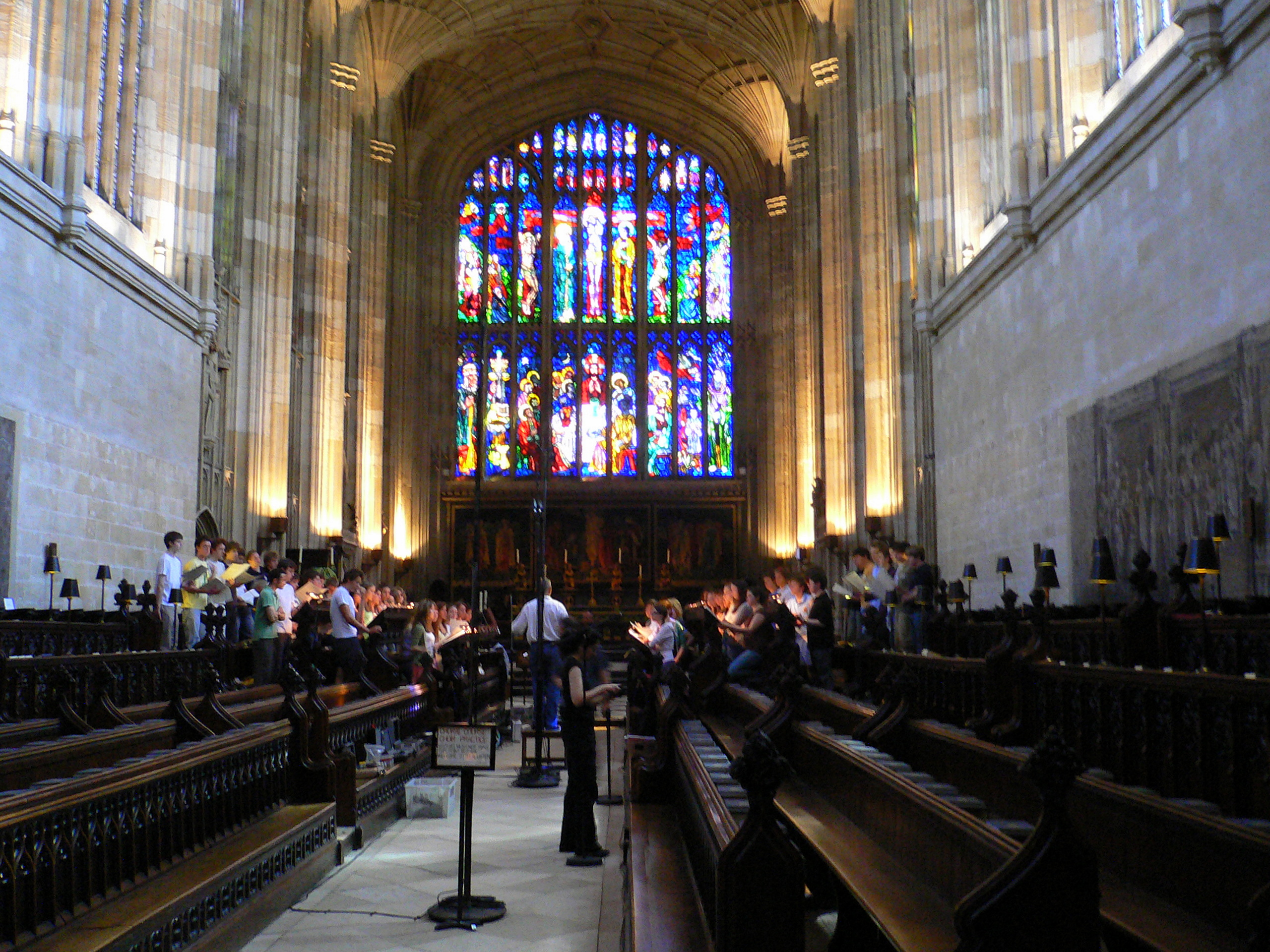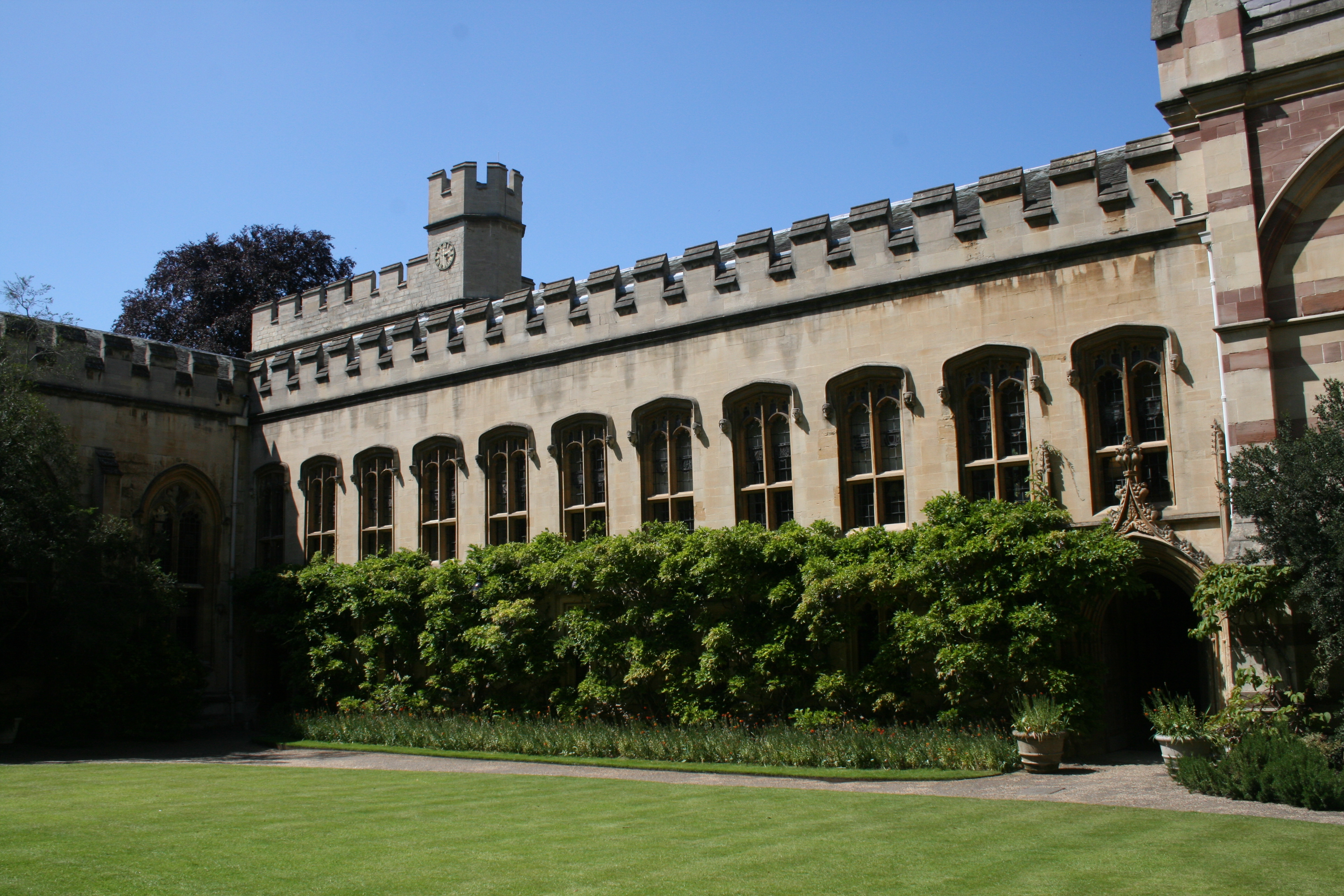|
Michael O'Connor (artist)
Michael O'Connor (1801 – 25 June 1867) was an Irish stained-glass artist based successively in Dublin, Bristol and London. A pupil of Thomas Willement, he developed a Gothic Revival style under the influence of Augustus Pugin, with whom he worked. He acquired a high reputation, and was commissioned to create windows for several cathedrals in England, Wales and Ireland. He is now seen as one of the leading stained-glass artists of his generation working in Britain. His stained-glass firm survived his death, initially under the management of his sons, and lasted until 1915. Career Michael O'Connor, born in Dublin, began his professional life as a heraldic artist, but along with many other early 19th-century practitioners of that art he decided to move into the renascent field of stained-glass design. Going to London in 1823, he studied this art under Thomas Willement, one of the leaders of the revival of stained-glass manufacture in Britain, and then returned to Dublin to es ... [...More Info...] [...Related Items...] OR: [Wikipedia] [Google] [Baidu] |
Bristol
Bristol () is a city, ceremonial county and unitary authority in England. Situated on the River Avon, it is bordered by the ceremonial counties of Gloucestershire to the north and Somerset to the south. Bristol is the most populous city in South West England. The wider Bristol Built-up Area is the eleventh most populous urban area in the United Kingdom. Iron Age hillforts and Roman villas were built near the confluence of the rivers Frome and Avon. Around the beginning of the 11th century, the settlement was known as (Old English: 'the place at the bridge'). Bristol received a royal charter in 1155 and was historically divided between Gloucestershire and Somerset until 1373 when it became a county corporate. From the 13th to the 18th century, Bristol was among the top three English cities, after London, in tax receipts. A major port, Bristol was a starting place for early voyages of exploration to the New World. On a ship out of Bristol in 1497, John Cabot, a ... [...More Info...] [...Related Items...] OR: [Wikipedia] [Google] [Baidu] |
Llandaff Cathedral
Llandaff Cathedral ( cy, Eglwys Gadeiriol Llandaf) is an Anglican cathedral and parish church in Llandaff, Cardiff, Wales. It is the seat of the Bishop of Llandaff, head of the Church in Wales Diocese of Llandaff. It is dedicated to Saint Peter and Saint Paul, and three Welsh saints: Dubricius ( cy, Dyfrig), Teilo and Oudoceus ( cy, Euddogwy). It is one of two cathedrals in Cardiff, the other being the Roman Catholic Cardiff Metropolitan Cathedral in the city centre. The current building was constructed in the 12th century on the site of an earlier church. Severe damage was done to the church in 1400 during the rebellion of Owain Glyndŵr, during the English Civil War when it was overrun by Parliamentarian troops, and during the Great Storm of 1703. By 1717, the damage to the cathedral was so extensive that the church seriously considered the removal of the see. Following further storms in the early 1720s, construction of a new cathedral began in 1734, designed by John ... [...More Info...] [...Related Items...] OR: [Wikipedia] [Google] [Baidu] |
Catholic Stained Glass Artists
The Catholic Church, also known as the Roman Catholic Church, is the largest Christian church, with 1.3 billion baptized Catholics worldwide . It is among the world's oldest and largest international institutions, and has played a prominent role in the history and development of Western civilization. O'Collins, p. v (preface). The church consists of 24 ''sui iuris'' churches, including the Latin Church and 23 Eastern Catholic Churches, which comprise almost 3,500 dioceses and eparchies located around the world. The pope, who is the bishop of Rome, is the chief pastor of the church. The bishopric of Rome, known as the Holy See, is the central governing authority of the church. The administrative body of the Holy See, the Roman Curia, has its principal offices in Vatican City, a small enclave of the Italian city of Rome, of which the pope is head of state. The core beliefs of Catholicism are found in the Nicene Creed. The Catholic Church teaches that it ... [...More Info...] [...Related Items...] OR: [Wikipedia] [Google] [Baidu] |
Artists From Dublin (city)
An artist is a person engaged in an activity related to creating art, practicing the arts, or demonstrating an art. The common usage in both everyday speech and academic discourse refers to a practitioner in the visual arts only. However, the term is also often used in the entertainment business, especially in a business context, for musicians and other performers (although less often for actors). "Artiste" (French for artist) is a variant used in English in this context, but this use has become rare. Use of the term "artist" to describe writers is valid, but less common, and mostly restricted to contexts like used in criticism. Dictionary definitions The ''Oxford English Dictionary'' defines the older broad meanings of the term "artist": * A learned person or Master of Arts. * One who pursues a practical science, traditionally medicine, astrology, alchemy, chemistry. * A follower of a pursuit in which skill comes by study or practice. * A follower of a manual art, such as ... [...More Info...] [...Related Items...] OR: [Wikipedia] [Google] [Baidu] |
19th-century Irish Male Artists
The 19th (nineteenth) century began on 1 January 1801 ( MDCCCI), and ended on 31 December 1900 ( MCM). The 19th century was the ninth century of the 2nd millennium. The 19th century was characterized by vast social upheaval. Slavery was abolished in much of Europe and the Americas. The First Industrial Revolution, though it began in the late 18th century, expanding beyond its British homeland for the first time during this century, particularly remaking the economies and societies of the Low Countries, the Rhineland, Northern Italy, and the Northeastern United States. A few decades later, the Second Industrial Revolution led to ever more massive urbanization and much higher levels of productivity, profit, and prosperity, a pattern that continued into the 20th century. The Islamic gunpowder empires fell into decline and European imperialism brought much of South Asia, Southeast Asia, and almost all of Africa under colonial rule. It was also marked by the collapse of the lar ... [...More Info...] [...Related Items...] OR: [Wikipedia] [Google] [Baidu] |
1915 Disestablishments In England
Events Below, the events of World War I have the "WWI" prefix. January *January – British physicist Sir Joseph Larmor publishes his observations on "The Influence of Local Atmospheric Cooling on Astronomical Refraction". * January 1 ** WWI: British Royal Navy battleship HMS ''Formidable'' is sunk off Lyme Regis, Dorset, England, by an Imperial German Navy U-boat, with the loss of 547 crew. ** Battle of Broken Hill: A train ambush near Broken Hill, New South Wales, Australia, is carried out by two men (claiming to be in support of the Ottoman Empire) who are killed, together with 4 civilians. * January 5 – Joseph E. Carberry sets an altitude record of , carrying Capt. Benjamin Delahauf Foulois as a passenger, in a fixed-wing aircraft. * January 12 ** The United States House of Representatives rejects a proposal to give women the right to vote. ** ''A Fool There Was'' premières in the United States, starring Theda Bara as a ''femme fatale''; she quickly b ... [...More Info...] [...Related Items...] OR: [Wikipedia] [Google] [Baidu] |
1867 Deaths
Events January–March * January 1 – The Covington–Cincinnati Suspension Bridge opens between Cincinnati, Ohio, and Covington, Kentucky, in the United States, becoming the longest single-span bridge in the world. It was renamed after its designer, John A. Roebling, in 1983. * January 8 – African-American men are granted the right to vote in the District of Columbia. * January 11 – Benito Juárez becomes Mexican president again. * January 30 – Emperor Kōmei of Japan dies suddenly, age 36, leaving his 14-year-old son to succeed as Emperor Meiji. * January 31 – Maronite nationalist leader Youssef Bey Karam leaves Lebanon aboard a French ship for Algeria. * February 3 – ''Shōgun'' Tokugawa Yoshinobu abdicates, and the late Emperor Kōmei's son, Prince Mutsuhito, becomes Emperor Meiji of Japan in a brief ceremony in Kyoto, ending the Late Tokugawa shogunate. * February 7 – West Virginia University is established in Morgantown, West Virginia. * ... [...More Info...] [...Related Items...] OR: [Wikipedia] [Google] [Baidu] |
1801 Births
Eighteen or 18 may refer to: * 18 (number), the natural number following 17 and preceding 19 * one of the years 18 BC, AD 18, 1918, 2018 Film, television and entertainment * ''18'' (film), a 1993 Taiwanese experimental film based on the short story ''God's Dice'' * ''Eighteen'' (film), a 2005 Canadian dramatic feature film * 18 (British Board of Film Classification), a film rating in the United Kingdom, also used in Ireland by the Irish Film Classification Office * 18 (''Dragon Ball''), a character in the ''Dragon Ball'' franchise * "Eighteen", a 2006 episode of the animated television series '' 12 oz. Mouse'' Music Albums * ''18'' (Moby album), 2002 * ''18'' (Nana Kitade album), 2005 * '' 18...'', 2009 debut album by G.E.M. Songs * "18" (5 Seconds of Summer song), from their 2014 eponymous debut album * "18" (One Direction song), from their 2014 studio album ''Four'' * "18", by Anarbor from their 2013 studio album ''Burnout'' * "I'm Eighteen", by Alice Cooper common ... [...More Info...] [...Related Items...] OR: [Wikipedia] [Google] [Baidu] |
Eton College Chapel
Eton College Chapel is the main chapel of Eton College, a public school in England. The chapel was planned to be a little over double its actual length, but this plan was never completed owing to the downfall of the founder Henry VI. A plaque on a building opposite the west end marks the point to which it should have reached. The Chapel is built in the late Gothic or Perpendicular style. The fan vaulting was installed in the 1950s after the wooden roof became infested with deathwatch beetles. It was completed in three years and is made of concrete, faced with stone, and supported by steel trusses with hand-carved Clipsham stone for the stone ribs supporting each bay. Services Eton College Chapel is in frequent use, with at least one service a day during termtime, and many additional services which are in popular demand, ranging from Taizé to Roman Catholic Communion, to Compline. Almost every morning there is a compulsory service, attended by different 'Blocks' (school y ... [...More Info...] [...Related Items...] OR: [Wikipedia] [Google] [Baidu] |
Balliol College, Oxford
Balliol College () is one of the constituent colleges of the University of Oxford in England. One of Oxford's oldest colleges, it was founded around 1263 by John I de Balliol, a landowner from Barnard Castle in County Durham, who provided the foundation and endowment for the college. When de Balliol died in 1268, his widow, Dervorguilla, a woman whose wealth far exceeded that of her husband, continued his work in setting up the college, providing a further endowment and writing the statutes. She is considered a co-founder of the college. The college's alumni include four former Prime Ministers of the United Kingdom ( H. H. Asquith, Harold Macmillan, Edward Heath, and Boris Johnson), Harald V of Norway, Empress Masako of Japan, five Nobel laureates, several Lords of Appeal in Ordinary, and numerous literary and philosophical figures, including Shoghi Effendi, Adam Smith, Gerard Manley Hopkins, and Aldous Huxley. John Wycliffe, who translated the Bible into English, was m ... [...More Info...] [...Related Items...] OR: [Wikipedia] [Google] [Baidu] |
Royal Hospital Kilmainham
The Royal Hospital Kilmainham ( ga, Ospidéal Ríochta Chill Mhaighneann) in Kilmainham, Dublin, is a former 17th-century hospital at Kilmainham in Ireland. The structure now houses the Irish Museum of Modern Art. History A priory, founded in 1174 by Strongbow, existed on the site until the Crown closed it down in the Dissolution of the Monasteries in the 1530s. The hospital was built as a home for retired soldiers of the Irish Army by Sir William Robinson, Surveyor General for James Butler, 1st Duke of Ormond, Lord Lieutenant of Ireland, between 1679 and 1687. Colonel John Jeffreys of Brecon, an old Welsh soldier who had served the Crown loyally during the English Civil War, was appointed the first Master, at a salary of £300 per annum. The hospital got off to a bad start financially: from a petition presented by Jeffreys to King James II in 1686, it seems that most of the original sources of funding had dried up. Architecturally, it was inspired by Les Invalides in ... [...More Info...] [...Related Items...] OR: [Wikipedia] [Google] [Baidu] |
Clontarf Castle
Clontarf Castle ( ga, Caisleán Chluain Tarbh) is a much-modernised castle, dating to 1837, in Clontarf, Dublin, Ireland, an area famous as a key location of the Battle of Clontarf in 1014. There has been a castle on the site since 1172. In modern times, it has functioned as a bar, cabaret venue, and hotel. History deLacy family and the Templars The first castle on the grounds, of which no trace remains, was built in 1172 by either Hugh de Lacy, Lord of Meath, or his tenant Adam de Phepoe. Clontarf was subsequently held by the Knights Templar and, after their suppression in 1308, passed to the Knights Hospitaller, until they were in turn deprived of it at the Dissolution of the Monasteries. The last prior, John Rawson was created Viscount Clontarf in 1541 in return for surrendering the castle and its lands to the crown. 16th century to 17th century In 1600 Queen Elizabeth I granted the estate to Sir Geoffrey Fenton, her secretary of state for Ireland, and it passed by ma ... [...More Info...] [...Related Items...] OR: [Wikipedia] [Google] [Baidu] |

.jpg)





